 by Michael Morrissey
by Michael Morrissey
There”s no doubt you”ve seen a bridge, and it”s almost as likely that you”ve traveled over one. If you”ve ever laid a plank or log down over a stream to keep from getting wet, you”ve even constructed a bridge. Bridges are truly ubiquitous — a natural part of everyday life. A bridge provides passage over some sort of obstacle: a river, a valley, a road, a set of railroad tracks…
In this article, we will look at the three major types of bridges so that you can understand how each one works. The type of bridge used depends on various features of the obstacle. The main feature that controls the bridge type is the size of the obstacle. How far is it from one side to the other? This is a major factor in determining what type of bridge to use, and by the time you are done reading this article you will understand why. The Basics
There are three major types of bridges:
- The beam bridge
- The arch bridge
- The suspension bridge
The biggest difference between the three is the distances they can cross in a single span. A span is the distance between two bridge supports, whether they are columns, towers or the wall of a canyon. A modern beam bridge, for instance, is likely to span a distance of up to 200 feet (60 meters), while a modern arch can safely span up to 800 or 1,000 feet (240 to 300 m). A suspension bridge, the pinnacle of bridge technology, is capable of spanning up to 7,000 feet (2,100 m).
What allows an arch bridge to span greater distances than a beam bridge, or a suspension bridge to span a distance seven times that of an arch bridge? The answer lies in how each bridge type deals with two important forces called compression and tension:
- Compression is a force that acts to compress or shorten the thing it is acting on.
- Tension is a force that acts to expand or lengthen the thing it is acting on.
A simple, everyday example of compression and tension is a spring. When we press down, or push the two ends of the spring together, we compress it. The force of compression shortens the spring. When we pull up, or pull apart the two ends, we create tension in the spring. The force of tension lengthens the spring.
Compression and tension are present in all bridges, and it”s the job of the bridge design to handle these forces without buckling or snapping. Buckling is what happens when the force of compression overcomes an object”s ability to handle compression, and snapping is what happens when the force of tension overcomes an object”s ability to handle tension. The best way to deal with these forces is to either dissipate them or transfer them. To dissipate force is to spread it out over a greater area, so that no one spot has to bear the brunt of the concentrated force. To transfer force is to move it from an area of weakness to an area of strength, an area designed to handle the force. An arch bridge is a good example of dissipation, while a suspension bridge is a good example of transference.
The Beam Bridge
A beam bridge is basically a rigid horizontal structure that is resting on two piers, one at each end. The weight of the bridge and any traffic on it is directly supported by the piers. The weight is traveling directly downward.
The force of compression manifests itself on the top side of the beam bridge”s deck (or roadway). This causes the upper portion of the deck to shorten.
The result of the compression on the upper portion of the deck causes tension in the lower portion of the deck. This tension causes the lower portion of the beam to lengthen.
Take a two-by-four and place it on top of two empty milk crates — you”ve just created a crude beam bridge. Now place a 50-pound weight in the middle of it. Notice how the two-by-four bends. The top side is under compression and the bottom side is under tension. If you keep adding weight, eventually the two-by-four will break. Actually, the top side will buckle and the bottom side will snap.
 |
Many beam bridges that you find on highway overpasses use concrete or steel beams to handle the load. The size of the beam, and in particular the height of the beam, controls the distance that the beam can span. By increasing the height of the beam, the beam has more material to dissipate the tension. To create very tall beams, bridge designers add supporting lattice work, or a truss, to the bridge”s beam. This support truss adds rigidity to the existing beam, greatly increasing its ability to dissipate the compression and tension. Once the beam begins to compress, the force is dissipated through the truss.
Despite the ingenious addition of a truss, the beam bridge is still limited in the distance it can span. As the distance increases, the size of the truss must also increase, until it reaches a point where the bridge”s own weight is so large that the truss cannot support it.
Types of Beam Bridges
Beam bridges come in dozens of different styles. The design, location and composition of the truss is what determines the type. In the beginning of the Industrial Revolution, beam-bridge construction in the United States was developing rapidly. Designers were coming up with many different truss designs and compositions. Wooden bridges were being replaced by all-iron or wood-and-iron combinations. The different truss patterns also made great strides during this period. One of the most popular early designs was the Howe truss, a design patented by William Howe in 1840.
 |
His innovation came not in the pattern of his truss, which was similar to the already existing Kingpost pattern, but in the use of vertical iron supports in addition to diagonal wooden supports. Many beam bridges today still use the Howe pattern in their truss.
 |
 |
 |

Truss Strength
A single beam spanning any distance experiences compression and tension. The very top of the beam experiences the most compression, and the very bottom of the beam experiences the most tension. The middle of the beam experiences very little compression or tension.
If the beam were designed so that there was more material on the top and bottom, and less in the middle, it would be better able to handle the forces of compression and tension. (For this reason, I-beams are more rigid than simple rectangular beams.)
A truss system takes this concept one step further. Think of one side of a truss bridge as a single beam. The center of the beam is made up of the diagonal members of the truss, while the top and bottom of the truss represent the top and bottom of the beam. Looking at a truss in this way, we can see that the top and bottom of the beam contain more material than its center (corrugated cardboard is very stiff for this reason).
In addition to the above-mentioned effect of a truss system, there is another reason why a truss is more rigid than a single beam: A truss has the ability to dissipate a load through the truss work. The design of a truss, which is usually a variant of a triangle, creates both a very rigid structure and one that transfers the load from a single point to a considerably wider area.
The Arch Bridge
An arch bridge is a semicircular structure with abutments on each end. The design of the arch, the semicircle, naturally diverts the weight from the bridge deck to the abutments.
Arch bridges are always under compression. The force of compression is pushed outward along the curve of the arch toward the abutments.
 |
The tension in an arch is negligible. The natural curve of the arch and its ability to dissipate the force outward greatly reduces the effects of tension on the underside of the arch. The greater the degree of curvature (the larger the semicircle of the arch), however, the greater the effects of tension on the underside.
As we just mentioned, the shape of the arch itself is all that is needed to effectively dissipate the weight from the center of the deck to the abutments. As with the beam bridge, the limits of size will eventually overtake the natural strength of the arch.
Types of Arch Bridges
 |
Arch types are few — after all, an arch is an arch is an arch. The only real subcategories come in the form of cosmetic design. There are, for example, Roman, Baroque and Renaissance arches, all of which are architecturally different but structurally the same.
Arches are fascinating in that they are a truly natural form of bridge. It is the shape of the structure that gives it its strength. An arch bridge doesn”t need additional supports or cables. In fact, an arch made of stone doesn”t even need mortar. Ancient Romans built arch bridges (and aqueducts) that are still standing, and structurally sound, today. These bridges and aqueducts are real testaments to the natural effectiveness of an arch as a bridge structure.
The Suspension Bridge
A suspension bridge is one where cables (or ropes or chains) are strung across the river (or whatever the obstacle happens to be) and the deck is suspended from these cables. Modern suspension bridges have two tall towers through which the cables are strung. Thus, the towers are supporting the majority of the roadway”s weight.
The force of compression pushes down on the suspension bridge”s deck, but because it is a suspended roadway, the cables transfer the compression to the towers, which dissipate the compression directly into the earth where they are firmly entrenched.
The supporting cables, running between the two anchorages, are the lucky recipients of the tension forces. The cables are literally stretched from the weight of the bridge and its traffic as they run from anchorage to anchorage. The anchorages are also under tension, but since they, like the towers, are held firmly to the earth, the tension they experience is dissipated.
 |
 |
Almost all suspension bridges have, in addition to the cables, a supporting truss system beneath the bridge deck (a deck truss). This helps to stiffen the deck and reduce the tendency of the roadway to sway and ripple.
A classic suspension bridge in New York City
Types of Suspension Bridges
Suspension bridges come in two different designs: the suspension bridge, recognized by the elongated ”M” shape, and the less-common cable-stayed design, which has more of an ”A” shape. The cable-stayed bridge does not require two towers and four anchorages as does the suspension bridge. Instead, the cables are run from the roadway up to a single tower where they are secured.

Forces on a cable-stayed bridge |
 |
 A cable-stayed bridge near Savannah, Georgia, USA A cable-stayed bridge near Savannah, Georgia, USA
|
The tower in a cable-stayed bridge, like its counterpart in a suspension bridge, is responsible for absorbing and dealing with the compression forces. In both bridges, the cables are under tension.
Additional Bridge Forces
We have so far touched on the two biggest forces in bridge design. There are dozens of other forces that also must be taken into consideration when designing a bridge. These forces are usually specific to a particular location or bridge design.
Torsion, which is a rotational or twisting force, is one which has been effectively eliminated in all but the largest suspension bridges. The natural shape of the arch and the additional truss structure of the beam bridge have eliminated the destructive effects of torsion on these bridges. Suspension bridges, however, because of the very fact that they are suspended (hanging from a pair of cables), are somewhat more susceptible to torsion, especially in high winds.
All suspension bridges have deck-stiffening trusses which, as in the case of beam bridges, effectively eliminate the effects of torsion; but in suspension bridges of extreme length, the deck truss alone is not enough. Wind-tunnel tests are generally conducted on models to determine the bridge”s resistance to torsional movements. Aerodynamic truss structures, diagonal suspender cables, and an exaggerated ratio between the depth of the stiffening truss to the length of the span are some of the methods employed to mitigate the effects of torsion.
Resonance
Resonance (a vibration in something caused by an external force that is in harmony with the natural vibration of the original thing) is a force which, unchecked, can be fatal to a bridge. Resonant vibrations will travel through a bridge in the form of waves. A very famous example of resonance waves destroying a bridge is the Tacoma Narrows bridge, which fell apart in 1940 in a 40-mph (64-kph) wind. Close examination of the situation suggested that the bridge”s deck-stiffening truss was insufficient for the span, but that alone was not the cause of the bridge”s demise. The wind that day was at just the right speed, and hitting the bridge at just the right angle, to start it vibrating. Continued winds increased the vibrations until the waves grew so large and violent that they broke the bridge apart.
When an army marches across a bridge, the soldiers are often told to “break step.” This is to avoid the possibility that their rhythmic marching will start resonating throughout the bridge. An army that is large enough and marching at the right cadence could start a bridge swaying and undulating until it broke apart.
In order to mitigate the resonance effect in a bridge, it is important to build dampeners into the bridge design in order to interrupt the resonant waves. Interrupting them is an effective way to prevent the growth of the waves regardless of the duration or source of the vibrations. Dampening techniques generally involve inertia. If a bridge has, for example, a solid roadway, then a resonant wave can easily travel the length of the bridge. If a bridge roadway is made up of different sections that have overlapping plates, then the movement of one section is transferred to another via the plates, which, since they are overlapping, create a certain amount of friction. The trick is to create enough friction to change the frequency of the resonant wave. Changing the frequency prevents the wave from building. Changing the wave effectively creates two different waves, neither of which can build off the other into a destructive force.
Weather
The force of nature, specifically weather, is by far the hardest to combat. Rain, ice, wind and salt can each bring down a bridge on its own, and in combination they most certainly will. Bridge designers have learned their craft by studying the failures of the past. Iron has replaced wood and steel has replaced iron. Pre-stressed concrete is used in many highway bridges. Each new material or design technique builds off the lessons of the past. Torsion, resonance and aerodynamics (after several spectacular collapses) have been addressed in better designs. The problems of weather, however, have yet to be completely conquered. Cases of weather-related failure far outnumber those of design-related failures. This can only suggest that we have yet to come up with an effective solution. To this day, there is no specific construction material nor bridge design that will eliminate or even mitigate these forces. The only deterrent is preventive maintenance.
For more information on bridges and related topics, check out the links on the next page.
Hidroizolare balcoane, terase, trotuare, băi şi bucătării
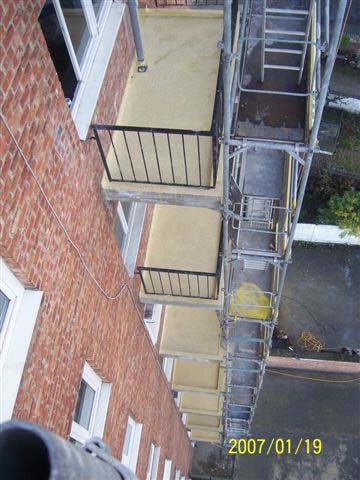
HIDROIZOLATII DEFINITIVE
Soluţii garantate performante de hidroizolaţii şi termoizolaţii pentru balcoane si terase.
Hidroizolare Perfecta la terase si balcoane. Garantii reale de la 10 pana la 100 de ani.
Aveți nevoie de ferestre și uși?
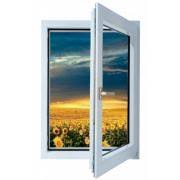 Încercați să ne cereți o ofertă și nouă și veți primi comisioane. Discounturile pot fi de la 20% pînă la 60%. De ce? Deoarece ne putem permite avand o oferta completa și fiind importatori direcți de profile!
Încercați să ne cereți o ofertă și nouă și veți primi comisioane. Discounturile pot fi de la 20% pînă la 60%. De ce? Deoarece ne putem permite avand o oferta completa și fiind importatori direcți de profile!
La unele comenzi de ferestre și uși, oferim gratuit plasele de insecte.
Facem contracte de întreținere / mentenanță. Intrați acum în parteneriate ce vă pot aduce câștiguri mari.

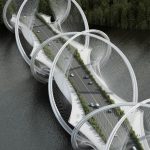


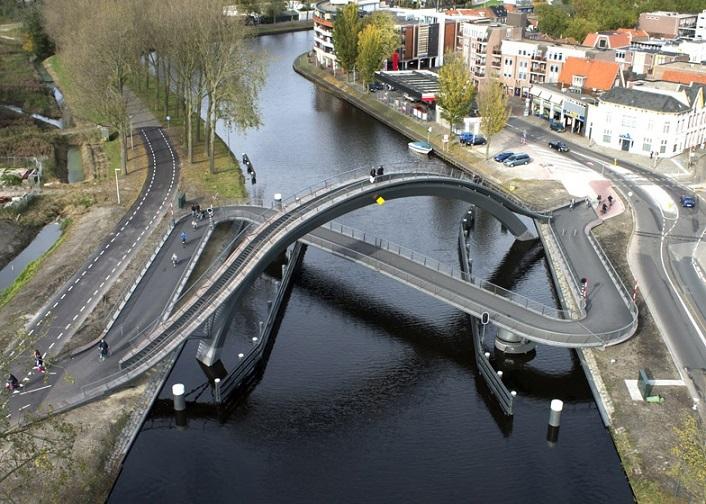
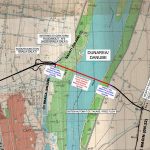
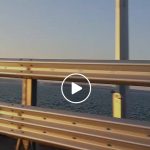
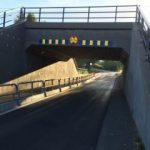
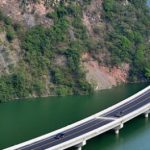



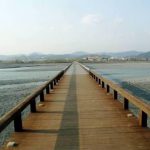
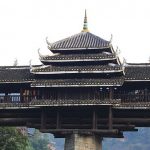
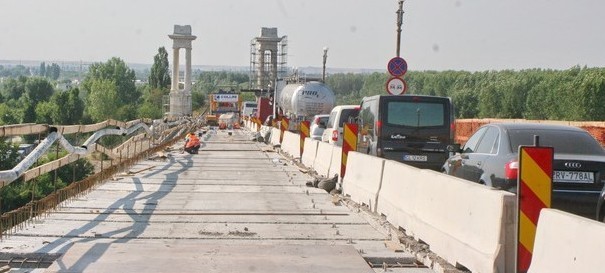
Niciun comentariu până acum